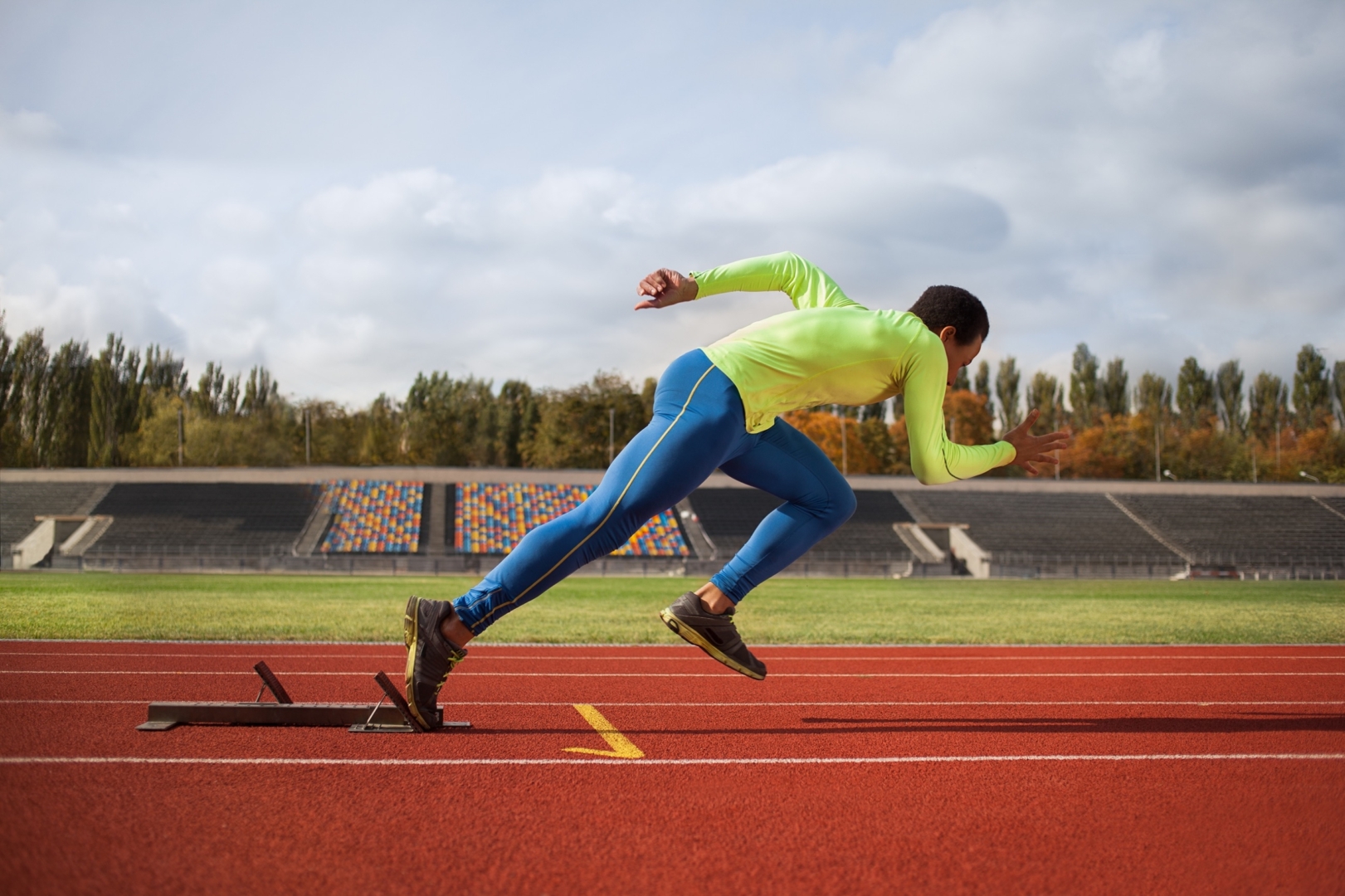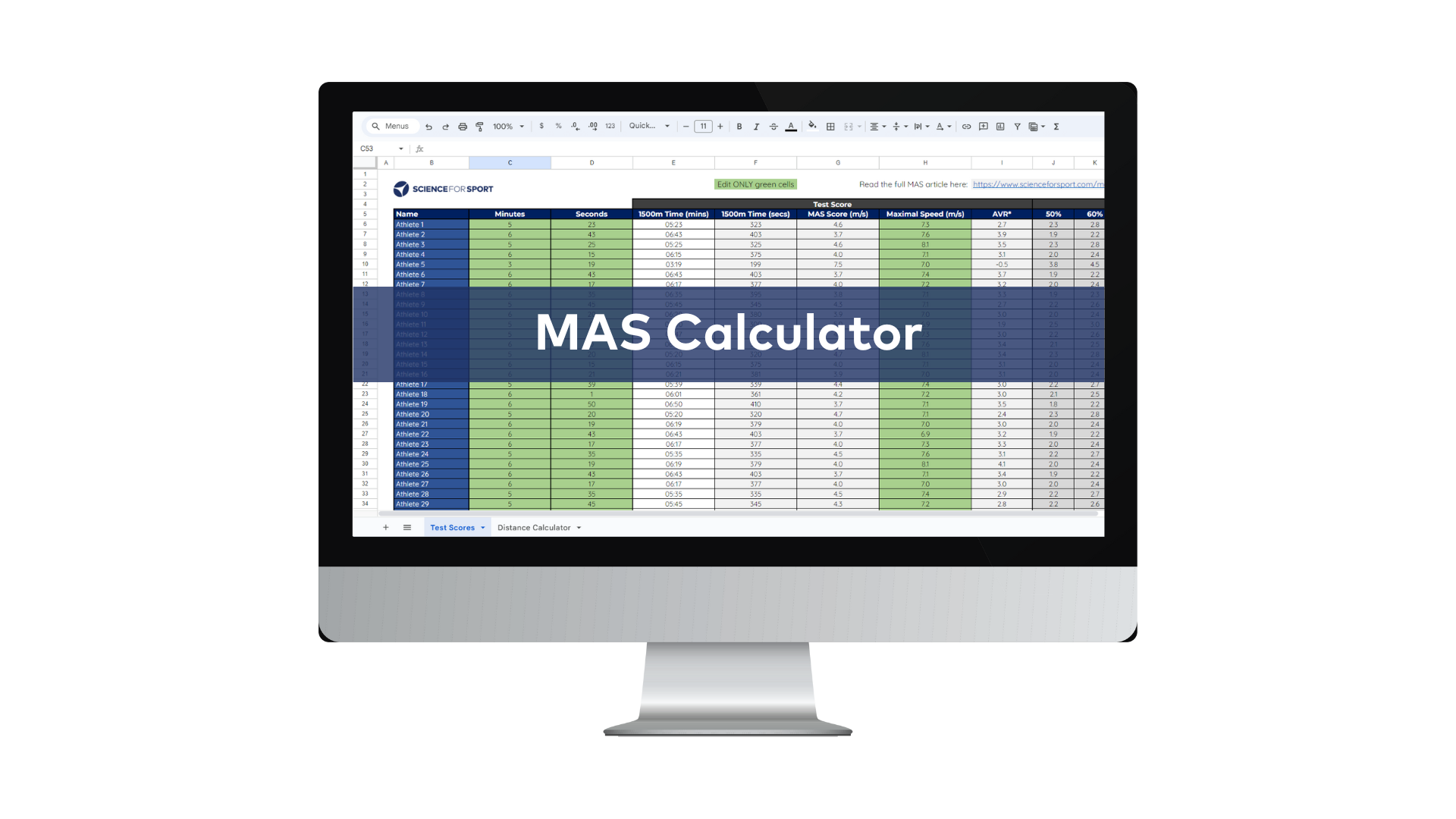Anaerobic speed reserve: Why it should be part of your conditioning repertoire
Adding what is called the ‘anaerobic speed reserve’ to your aerobic test data can help take athletes’ conditioning to the next level.
Anaerobic speed reserve: Your secret conditioning weapon?
We all know you need a seriously beefy engine to drive team sport performance, but building it can be really complex. So if you’re fed up with feeling like you’re about to throw up during your conditioning drills, you need to listen to episode 77 of the Science for Sport Podcast.
In this episode, world-renowned sports scientist Martin Buchheit reveals how you can plan conditioning sessions with sniper-like precision, so you can show your quality for the full match and, if necessary, beyond.
Traditional conditioning training may involve a test of aerobic or intermittent performance, followed by a training prescription based on the individual athlete’s data. This, my friends, no longer cuts the mustard. The problem is that an athlete’s maximum sprint speed (MSS) influences anaerobic performance significantly.
Buchheit advocates adding what is called the ‘anaerobic speed reserve’ to your aerobic test data, and interestingly, according to Buchheit, coaches have been subconsciously doing this for decades already.
“It’s something that looks new for some people, but it’s been in the air for a while. I think for track and field coaches, [they knew about it] about 100 years ago,” Buchheit said.

Some important definitions
Before we get into some fantastic physiology, we need to take on board some important definitions, which help to frame the discussion:
- Maximal Aerobic Speed (MAS): The slowest speed an athlete will achieve their V02 max
- Maximum Sprint Speed (MSS): The maximum speed an athlete can sprint
- Anaerobic Speed Reserve (ASR): Reserve of speed between the MAS and MSS
To explain this using a metaphor, Buchheit tells us to imagine a glass of water. If you fill the glass up to just above half with water, you’ll have your MAS. Now add in oil, which sits on top of the water – that’s your Anaerobic Speed Reserve. The top of the oil would be your MSS. Luckily, he’s a great sports scientist – he’d make a terrible barman.
Putting some numbers on this, let’s say that your MAS was 18km/h, and your MSS was 30km/h.
“The amount of oil between 18-30km/h — the amount of oil you could put in — is the ASR,” Buchheit said.
The-all important data
So, how can you get data to plot?
Well, this is fairly simple – testing for max speed just requires some timing gates and a distance between 30-60m. In this test, you simply run as fast as possible to get your MSS. For MAS, you can easily use a 1,500-2,000m time trial, where you run this distance as fast as possible too. Taking the speeds of these tests will allow you to create a bar chart (figure 1) and start to compare to your previous results, or to other athletes. This is where it gets interesting.

A practical example
Some athletes may have the same MAS scores, but differing MSS. Let’s take the example of two athletes (for fun, let’s call them James de Lacey, my Science for Sport colleague, and me, Matt Solomon), both with a MAS of 18km/h. James has an MSS of 30km/h, Matt of 36km/h. These athletes have an ASR of 12km/h and 18km/h, respectively.
If you prescribed conditioning training based solely on their MAS scores, James would have to work closer to their maximal sprint speed than Matt. This causes an issue because either James is working way too hard, or Matt is sauntering around with no difficulty at all. By allowing for their ASR, coaches can optimise an athlete’s conditioning work.
Let’s take the following practical examples:
- Example 1: Coach prescribes running at 120% MAS. For both James and Matt, this is 21.6km/h.
- Example 2: Coach prescribes running at 100% MAS + 20% ASR. James runs at 20.4km/h and Matt runs at 21.6km/h.
In this example, we can see allowing for the ASR has meant James no longer overworks during their conditioning training.
“Instead of prescribing intervals based only on percentages of MAS, we can now prescribe intervals based on the percentage of the reserve. Instead of doing 15s of work of 120% MAS, we can probably do it at 20% of the ASR. And a player with a greater reserve will do more work than or run at a higher speed than another athlete with the same MAS but a smaller reserve,” Buchheit said.
All you need to know about the anaerobic speed reserve
Buchheit goes on to discuss how you can group athletes based on their profiles, link this to muscle fibre type, and subsequently how you can adjust the conditioning work you do to the type of athlete. This is a really important consideration for anyone working in team sports, who have a large range of athlete types.
If you want to hear how you can take the ASR a notch further, listen to the whole podcast with Buchheit using the link below.
You can download the podcast on any of the big hosting services, including Apple Podcasts and Spotify, or just use this link: https://scienceforsport.fireside.fm/77
Don’t forget to hit the subscribe button and be sure to give us a review and rating too!




